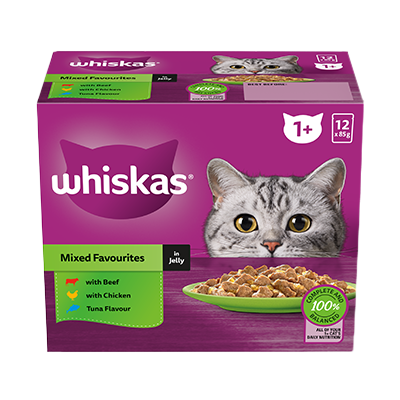
Photo by Jose Sousa on Pexels
Cat Behaviours Explained: Secrets of Cat Communications
Cats have a fascinating way of communicating, from meows to purrs, and chirps to chatters. These cat communications don’t have to be mysterious signals, so let’s take a look at what they all mean.
The Multifaceted Meow
We all know it – the meow is the most famous cat noise and is mostly heard just before dinner time. Cats have learnt that a meow can get them what they want, when they want it!
Definition and Purpose
The meow is a cat's primary way to grab your attention. Kittens meow to their mothers, but as they grow, they learn to meow to communicate with humans. If your cat won’t stop meowing and you think it’s out of character, check with your vet.
Types of Meows
Meows can vary in pitch and length. A short, high-pitched meow often means ‘hello’ or ‘feed me’, while a long, drawn-out meow could signal discomfort or a strong need for attention.
Responding to Meows
Check your cat's body language to understand what they are trying to communicate. Is their tail up and ears forward? They're happy! Tail down and ears flat? They might be upset or scared. Every cat communicates differently, so it’s up to you to figure out what they need; whether that’s food, a cuddle, or simply some space. If you’re not sure, your vet is there to help.
The Purring Phenomenon
Purring is one of the most delightful sounds in cat language and usually comes after a bowl of WHISKAS® food. But it’s not the only reason they do it.
Understanding Purrs
A consistent purr usually means your cat is content, especially when they're curled up in your lap. The vibrations can have a calming effect.
The Healing Power of Purrs
Did you know cat purring can heal? Studies show that the frequency of a purr can help reduce stress and even lower blood pressure in humans! It’s a win-win.
Interpreting Purrs
Cat purring usually happens for positive reasons, but it’s always important to consider the context and other signals your cat gives off. If your cat recently got a fright or is coming back from illness, they might be purring to self-soothe.
Chirps and Chatters
One of the most intriguing sounds your cat can make is a chirp or chatter. Let’s find out what it means and why they do it.
Origins of Chirping
These noises usually happen when cats are watching birds. Think of it as an expression of excitement or frustration – it means your cat wants to catch them! Cat chirping is their natural instinct.
Engaging with Your Cat
Next time you see your cat chirping or purring, try to encourage and connect with them by mimicking the sound. They might just do it back. It can be a fun, interactive moment for both of you.
Understanding Hisses and Growls
Pay attention to the different sounds your cat makes. They might need space or just want to chat with you! Understanding these is key to growing a great cat parent relationship.
The Defensive Sounds
Cat hissing and growling are clear signs your cat feels threatened, scared, or even in pain. Sometimes it’s because of another cat, a dog or their personal space is being compromised. It’s important that you identify the cause and take steps to make your cat feel comfortable again. Remove the threat, give your cat space, and chat to your vet if you’re worried.
Recognising Stress Signals
Sometimes cat language isn’t overly obvious, so if you think something’s up, take a closer look. Signs that indicate your cat is stressed are dilated pupils, flattened ears, and a puffed-up tail. Cat hissing and similar vocalisations can act as a warning too.
De-escalating Techniques: Calming a cat that is hissing or growling.
If your cat is hissing or growling, they’ll need some time and space until they relax. Speak softly and avoid sudden movements to help them calm down. A treat for calming down can help reinforce positive behaviour too.
Enhancing Communication with Your Cat
Cat language is easy to grasp, but can always be better! If you’ve ever wondered what your cat is trying to tell you, or how you can connect, here are some ways to enhance your communication.
Listening and Observing
Pay close attention to your cat's vocalisations and body language. The more you observe cat language, the better you'll understand your cat’s needs. They’re pretty entertaining when you tune in.
Vocalising Back
Don’t be shy! Talk or meow back to your cat in a soft voice. They might not understand every word, but they'll appreciate the attention.
Cat communications are a fun way to connect with your furry friend. To learn more about cats, visit our Guide to Purrr-fect Living!
©2024 Mars or Affiliates.








